Webinar on The New AISI Shear Wall Design Guide – AISI-D113-19
$100.00
Continuing Education Credits Available – 1.5 PDH Credits
The webinar will provide an overview of shear wall design principles as presented in AISI D113-19 including: Load Path; Wind and Seismic Considerations; Type I and II Shear Wall concepts; Shear Wall Deflection. Design examples will also be presented.
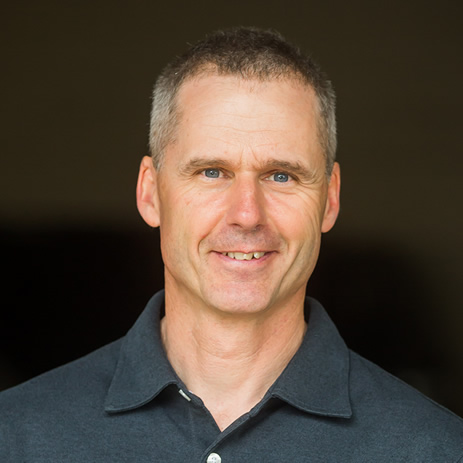
Presenter: Robert L. Madsen, P.E., Devco Engineering, Inc.
Robert Madsen is a Principal with Devco Engineering, Inc. in Enterprise, Oregon where he specializes in the design of cold-formed steel framing. He serves on the American Iron and Steel Institute (AISI) Committee on Specifications (COS) and Committee on Framing Standards (COFS), where he is chairman of the Lateral Subcommittee. He is also chairman of the Technical Review Committee of the Cold-Formed Steel Engineers Institute (CFSEI).
In order to receive credit for this course, you must complete the quiz at the end and pass with at least 80% for a certificate to be generated automatically
Related Products

Webinar on the Built-Up Member Design Considerations
Continuing Education Credits Available – 1.5 PDH Credits
What can be done when a structural member requires a high-load capacity? The common solution is to design a built-up profile consisting of two or more cold-formed steel (CFS) framing sections. Built-up profiles use common CFS framing members, such as shear wall boundary studs, floor joists, stud packs and headers. This webinar will review the applicable AISI S100, North American Specification for the Design of Cold-Formed Steel Structural Members and AISI S240, North American Standard for Cold-Formed Steel Structural Framing design provisions for two types of built-up profiles — built-up compression members and built-up flexural members. The webinar will review the member limit states of global buckling, local buckling and distortional buckling. It will also provide guidance for achieving adequate interconnection of the individual profiles.
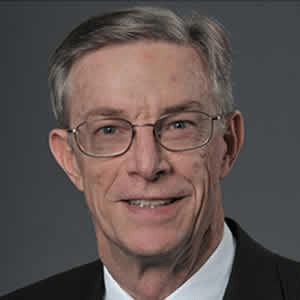 Presenter: Roger LaBoube, Ph.D., P.E., Cold-Formed Steel Engineers Institute
Presenter: Roger LaBoube, Ph.D., P.E., Cold-Formed Steel Engineers Institute
Dr. Roger A. LaBoube is Curator’s Distinguished Teaching Professor Emeritus of Civil, Architectural and Environmental Engineering and former director of the Wei-Wen Yu Center for Cold-Formed Steel Structures at the Missouri University of Science & Technology. Dr. LaBoube holds B.S., M.S., and Ph.D. degrees in Civil Engineering from the University of Missouri-Rolla. He has an extensive background in the design and behavior of cold-formed steel structures. His research and design activities have touched on many facets of cold-formed steel construction, including cold-formed steel beams, panels, trusses, headers, and wall studs as well as bolt, weld, and screw connections. Dr. LaBoube is active in several professional organizations and societies. He serves as chairman of the American Iron and Steel Institute Committee on Framing Standards and is an emeritus member of the AISI Committee on Specifications for the Design of Cold-Formed Steel Structural Members. He is a registered professional engineer in Missouri.
In order to receive credit for this course, you must complete the quiz at the end and pass with at least 80% for a certificate to be generated automatically
Price: $100

Webinar on Roles and Responsibilities for Success with Cold-Formed Steel Framing
The webinar will be presented as a panel interactive session, with Jeffrey Klaiman, P.E., principal in charge of structural engineering at ADTEK Engineers, Inc. as the lead presenter. Panelists will include Don Allen, P.E., director of engineering at Super Stud Building Products, Inc.; Kenneth Pagano, P.E., cold-formed steel truss design engineer at Scosta Corporation; and Patrick W. Ford, P.E., senior project manager at raSmith. The webinar will: Introduce AISI S202, Code of Standard Practice for Cold-Formed Steel Structural Framing and describe how this standard was developed and is maintained. Describe the roles of various individuals and entities in a cold-formed steel framing project. Identify new items and changes in the 2020 edition of the Code of Standard Practice. Provide examples of items in the Code of Standard Practice and how they can be used in actual projects. Include a panel discussion with the authors and users of the standard.
Presenters
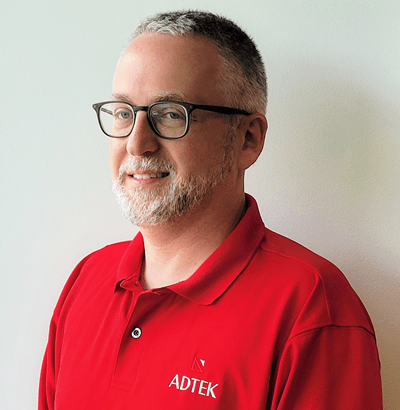
Jeffrey Klaiman, P.E.
ADTEK Engineers, Inc.
Jeff has almost 30 years of experience in the construction industry. His responsibilities include building maintenance and engineering; on-site engineering for a concrete contractor; Manager of Technical Services and Versa-Truss Product Manager for Dale/Incor (national manufacturer of cold-formed steel framing products and systems), participation on the American Iron and Steel Institute’s Committee on Specifications for the Design of CFS Structural Members and Committee on Framing Standards; a member of CFSEI for more than 15 years; ASTM International and the SFA. Mr. Klaiman serves as chairman of the Standard Practices Subcommittee of the AISI Committee on Framing Standards, chairman of the SFIA Technical Committee, and is also the president of MASFA. He is a past president of CFSEI. In his position at ADTEK Engineers, Inc. as Principal in Charge of Structural Engineering, Mr. Klaiman oversees the design and coordination of all cold-formed steel design documents. He also manages in-house staff in four offices for general structural and CFS framing design, develops project schedules, and coordinates quality control reviews with project managers on his team. Mr. Klaiman holds a bachelor’s degree in Civil Engineering from the University of Michigan, and an MBA from Eastern Michigan University.
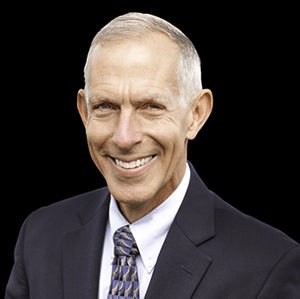
Don Allen, P.E., S.E., LEED AP
Super Stud Building Products
Don Allen, P.E., S.E., LEED AP, is an internationally known expert in cold-formed steel design, and currently serves as director of engineering for Super Stud Building Products. He chairs the AISI Education Committee, is actively involved in the development of ASTM and AISI standards, and has designed projects in Europe, Africa and North America. In addition to working for steel product manufacturers, Don has spent more than a decade in private practice and served over nine years as technical director for the Steel Stud Manufacturers Association (SSMA), the Steel Framing Alliance (SFA) and the Cold-Formed Steel Engineers Institute (CFSEI). At Super Stud, Don is actively involved in product development for multiple product lines including steel framing, MgO structural floor sheathing, steel structural wall panels, exterior insulation and finish systems (EIFS), and steel doors.
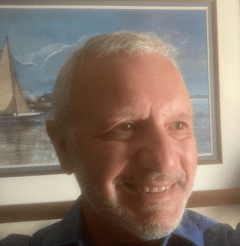
Kenneth (Kenny) J. Pagano, P.E.
Scosta Corporation
Kenneth (Kenny) J. Pagano, P.E. is the cold-formed steel truss design engineer for Scosta Corporation headquartered in Sebring, FL. Kenny also serves on the AISI Committee on Framing Standard’s main Committee as well as the Framing and Standard Practices Sub-Committees. Kenny maintains an office outside of Palatka, FL where he is an Adjunct Professor for the Engineering Technology department at the local college – St Johns River State College.
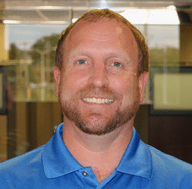
Patrick M. Hainault, P.E.
raSmith
Patrick M. Hainault, P.E. is the cold-formed group leader at raSmith in Brookfield, Wisconsin. His experience includes engineering design and staff management with raSmith and Matsen Ford Design Associates, Inc., where he was a principal and senior engineer for 21 years. His expertise includes application of the latest technologies and design concepts to a wide variety of primary and secondary structures, including prefabricated systems. In addition to specialty expertise in cold-formed steel, his engineering systems design experience includes structural steel, reinforced concrete, engineered masonry and wood. He was a structural designer for a concrete reinforcement supplier and a technician for a national material-testing firm. Patrick is a member of the SFIA Technical Committee and the AWCI Construction Technology Committee. He is a registered Professional Engineer in Wisconsin and several other states. He earned his Bachelor of Science degree in Civil Engineering from Marquette University.
In order to receive credit for this course, you must complete the quiz at the end and pass with at least 80% for a certificate to be generated automatically

Webinar on Updates to the AISI North American Specification and Standards
Continuing Education Credits Available – 1.5 PDH Credits
The American Iron and Steel Institute (AISI) has been involved in the support of research and the development and maintenance of cold-formed steel codes, standards and specifications for 90 years. AISI sought American National Standards Institute (ANSI) accreditation and was approved as a developer of American National Standards in 1999.
AISI S100, North American Specification for the Design of Cold-Formed Steel Structural Members and the suite of AISI framing standards are the referenced documents for cold-formed steel design in the International Building Code. Every few years, AISI updates the Specification and standards to add new provisions based on the latest information from research and industry. These updates can deliver improved methods for analyzing members, provide new considerations when designing members and connections, and directly impact the design of floor, wall and roof systems. This webinar will review all of the relevant changes to these AISI documents and how they are intended for implementation into the applicable building codes.
Presenter: Jon-Paul Cardin, P.E.
American Iron and Steel Institute
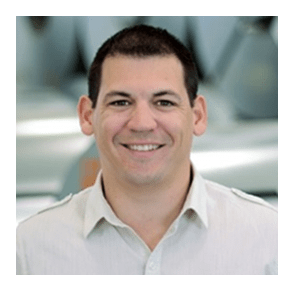 Jon-Paul currently serves as a codes and standards engineer for the American Iron and Steel Institute (AISI). In this position, he represents the interests of the steel construction industry in the national codes and standards arenas. Specifically, Jon-Paul is active in the International Code Council (IBC, IRC), ASCE 7 and NFPA 5000, as well as the AISI Committee on Specifications and AISI Committee on Framing Standards. Prior to joining AISI, Jon-Paul served as the engineering manager for a steel framing manufacturer. He holds Bachelor of Science degrees in both Civil Engineering (Structural) and Mathematics from the University of Idaho.
Jon-Paul currently serves as a codes and standards engineer for the American Iron and Steel Institute (AISI). In this position, he represents the interests of the steel construction industry in the national codes and standards arenas. Specifically, Jon-Paul is active in the International Code Council (IBC, IRC), ASCE 7 and NFPA 5000, as well as the AISI Committee on Specifications and AISI Committee on Framing Standards. Prior to joining AISI, Jon-Paul served as the engineering manager for a steel framing manufacturer. He holds Bachelor of Science degrees in both Civil Engineering (Structural) and Mathematics from the University of Idaho.
In order to receive credit for this course, you must complete the quiz at the end and pass with at least 80% for a certificate to be generated automatically
Price: $100

Webinar on Cold-Formed Steel Floor System
Continuing Education Credits Available – 1.5 PDH Credits
This webinar will focus on the ideation, development, analysis and experimental evaluation of an innovative lightweight modular floor system utilizing cold-formed steel. As part of a research project funded by the American Institute of Steel Construction (AISC), researchers at the University of Kansas developed a novel floor system composed primarily of cold-formed steel, intended for modular use in steel-framed buildings. The webinar will highlight the background and initial development of the floor system, including design and construction considerations and corresponding analyses. As rapid fabrication, vibration mitigation and diaphragm behavior were emphasized in the development of the floor system, experimental testing of the floor focused on the cyclic behavior of connectors in the cold-formed steel components, vibration serviceability of the floor, and cyclic diaphragm performance within a steel-framed structure. All aspects of system validation will be presented, including physical and analytical evaluations as well as recommendations for future implementation and other project.
Matthew F. Fadden, Ph.D., P.E., Wiss, Janney, Elstner Associates
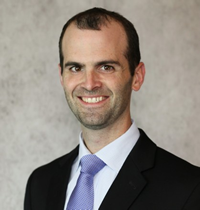 Dr. Fadden joined WJE with 10 years of experience in structural engineering research and consulting. His primary areas of expertise include the design, analysis and evaluation of steel structures (hot-rolled and cold-formed) and reinforced concrete structures. Additionally, Dr. Fadden has expertise in structural evaluation using finite element modeling and structural testing. His experience also includes seismic design, structural vibrations, offshore structures and litigation support.
Dr. Fadden joined WJE with 10 years of experience in structural engineering research and consulting. His primary areas of expertise include the design, analysis and evaluation of steel structures (hot-rolled and cold-formed) and reinforced concrete structures. Additionally, Dr. Fadden has expertise in structural evaluation using finite element modeling and structural testing. His experience also includes seismic design, structural vibrations, offshore structures and litigation support.
Prior to joining WJE, Dr. Fadden was a professor in the Department of Civil, Environmental, and Architectural Engineering at the University of Kansas. There, his research areas included modular systems and connections for steel buildings, bolted and welded connections, ancillary sign structures, structural vibrations, and additive manufacturing for civil infrastructure. Dr. Fadden has authored many technical publications in referenced journals and provided numerous conference presentations.
Dr. Fadden is a member of the American Institute of Steel Construction (AISC), the American Society of Civil Engineers (ASCE), and the Cold-Formed Steel Engineers Institute (CFSEI). He is a registered Professional Engineer in Alabama, Florida, Kansas and Louisiana He earned a B.S. degree in Civil Engineering from the University of Illinois at Urbana-Champaign and M.S. and Ph.D. degrees in Civil Engineering from the University of Michigan.
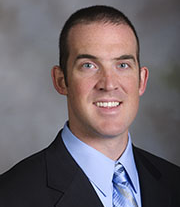 William N. Collins, Ph.D., P.E., University of Kansas
William N. Collins, Ph.D., P.E., University of Kansas
Dr. Collins is the Chair’s Council Associate Professor of Civil, Environmental and Architectural Engineering at the University of Kansas.
Dr. Collins’ expertise is in structural engineering, with a particular focus on fracture and fatigue behavior and metallic infrastructure. He has been associated with numerous projects related to structural behavior, fabrication and inspection. He is active with numerous professional organizations, including TRB, ASTM International and the AASHTO/NSBA Collaboration. Dr. Collins is also engaged in a variety of educational initiatives at the University of Kansas, including the development and implementation of peer mentoring in structural engineering curricula, an effort that has spread to other groups and departments within the university. He was awarded the AISC Milek Fellowship in 2021.
Previously, he was a research engineer at Purdue University and a research/teaching assistant at Virginia Polytechnic Institute and State University (Virginia Tech). He was also a timberwright at Blue Ridge Timberwrights in Christiansburg, Virginia and a construction superintendent at Prospect Homes of Richmond.
Dr. Collins is a registered Professional Engineer in Kansas. He holds B.S., M.S., and Ph.D. degrees in Civil Engineering, Structural Engineering and Materials from Virginia Tech.
In order to receive credit for this course, you must complete the quiz at the end and pass with at least 80% for a certificate to be generated automatically

Back-to-Basics: Structural vs Nonstructural Members Webinar
Continuing Education Credits Available – 1.5 PDH Credits
The North American Standard for Cold-Formed Steel Framing – Nonstructural Members, AISI S220, has been adopted into IBC 2015. AISI S220 was created to help delineate and eliminate the confusion between the engineering principles and requirements for cold-formed steel structural members and nonstructural members. The webinar will address the basic behavior of composite vs non-composite wall assemblies, as well as design requirements that differ between the structural and nonstructural member.
Presenter: Roger LaBoube, Ph.D., P.E.
Wei-Wen Yu Center for Cold-Formed Steel Structures 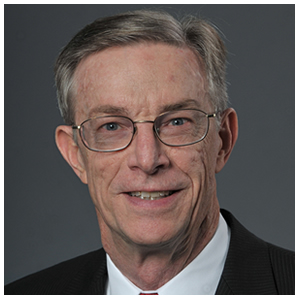
Roger LaBoube, Ph.D., P.E. is Curator’s Distinguished Teaching Professor Emeritus of Civil, Architectural and Environmental Engineering and Director of the Wei-Wen Yu Center for Cold-Formed Steel Structures at the Missouri University of Science & Technology (formerly University of Missouri-Rolla). Dr. LaBoube holds B.S., M.S., and Ph.D. degrees in Civil Engineering from the University of Missouri-Rolla. Dr. LaBoube has an extensive background in the design and behavior of cold-formed steel structures. His research and design activities have touched on many facets of cold-formed steel construction including cold-formed steel beams, panels, trusses, headers, and wall studs as well as bolt, weld, and screw connections. He is active in several professional organizations and societies, including membership on the American Iron and Steel Institute’s Committee on Specifications for the Design of Cold-Formed Steel Structural Members and chairman of the AISI Committee on Framing Standards. He is a registered Professional Engineer in Missouri.
In order to receive credit for this course, you must complete the quiz at the end and pass with at least 80% for a certificate to be generated automatically

Webinar on the Cold-Formed Steel Classroom: Understanding the Fundamentals Behavior of Cold-Formed Steel Members
Continuing Education Credits Available – 1.5 PDH Credits
The concepts of cold-formed steel behavior and design are not typically taught in engineering schools and therefore engineers are often required to self-teach these concepts. Therefore, if you are an entry level structural engineer, or a seasoned veteran, this CFSEI lecture is intended to provide a fundamental understanding of the some of the behavior and design principles for cold-formed steel members and connections. Roger will draw on lecture materials used in his semester course and three-day short course to explain the unique aspects of cold-formed steel behavior and design principles of AISI S100. The seminar will also discuss the roll-out of a new CFSEI Six-Hour lecture series that provides an overview of cold-formed steel member and connection behavior and design.
Presenter: Roger LaBoube, Ph.D., P.E.
Wei-Wen Yu Center for Cold-Formed Steel Structures
 Dr. Roger A. LaBoube is Curator’s Distinguished Teaching Professor Emeritus of Civil, Architectural and Environmental Engineering and Director of the Wei-Wen Yu Center for Cold-Formed Steel Structures at the Missouri University of Science & Technology (formerly University of Missouri-Rolla). Dr. LaBoube holds B.S., M.S., and Ph.D. in Civil Engineering from the University of Missouri-Rolla. Dr. LaBoube has an extensive background in the design and behavior of cold-formed steel structures. His research and design activities have touched on many facets of cold-formed steel construction to include: cold-formed steel beams, panels, trusses, headers, wall studs as well as bolt, weld, and screw connections. Dr. LaBoube is active in several professional organizations and societies, including a member of the American Iron and Steel Institute’s Committee on Specifications for the North American Specification for the Design of Cold-Formed Steel Structural Members and chairman of the AISI Committee on Framing Standards. He is a Registered Professional Engineer in Missouri.
Dr. Roger A. LaBoube is Curator’s Distinguished Teaching Professor Emeritus of Civil, Architectural and Environmental Engineering and Director of the Wei-Wen Yu Center for Cold-Formed Steel Structures at the Missouri University of Science & Technology (formerly University of Missouri-Rolla). Dr. LaBoube holds B.S., M.S., and Ph.D. in Civil Engineering from the University of Missouri-Rolla. Dr. LaBoube has an extensive background in the design and behavior of cold-formed steel structures. His research and design activities have touched on many facets of cold-formed steel construction to include: cold-formed steel beams, panels, trusses, headers, wall studs as well as bolt, weld, and screw connections. Dr. LaBoube is active in several professional organizations and societies, including a member of the American Iron and Steel Institute’s Committee on Specifications for the North American Specification for the Design of Cold-Formed Steel Structural Members and chairman of the AISI Committee on Framing Standards. He is a Registered Professional Engineer in Missouri.
In order to receive credit for this course, you must complete the quiz at the end and pass with at least 80% for a certificate to be generated automatically

Webinar on Cold-Formed Steel Classroom: Connection Design 101
Continuing Education Credits Available – 1.5 PDH Credits
This webinar will review the fundamentals of cold-formed steel connection behavior and design. The primary focus will be on screw and weld connections; however, a limited discussion of bolt and power-actuated fastener (PAF) connections will also be provided. An overview of the design provisions in AISI S100, North American Specification for the Design of Cold-Formed Steel Structural Members will be included. In addition, design issues for typical cold-formed steel framing connections will be explored, including deflection track, stud-to-track, stud splice and cantilever knee wall connections. 
Presenter: Roger LaBoube, Ph.D., P.E.
Wei-Wen Yu Center for Cold-Formed Steel Structures
Roger LaBoube, Ph.D., P.E. is Curator’s Distinguished Teaching Professor Emeritus of Civil, Architectural and Environmental Engineering and Director of the Wei-Wen Yu Center for Cold-Formed Steel Structures at the Missouri University of Science & Technology (formerly University of Missouri-Rolla). Dr. LaBoube holds B.S., M.S., and Ph.D. degrees in Civil Engineering from the University of Missouri-Rolla. Dr. LaBoube has an extensive background in the design and behavior of cold-formed steel structures. His research and design activities have touched on many facets of cold-formed steel construction including cold-formed steel beams, panels, trusses, headers, and wall studs as well as bolt, weld, and screw connections. He is active in several professional organizations and societies, including membership on the American Iron and Steel Institute’s Committee on Specifications for the Design of Cold-Formed Steel Structural Members and chairman of the AISI Committee on Framing Standards. He is a registered Professional Engineer in Missouri.
In order to receive credit for this course, you must complete the quiz at the end and pass with at least 80% for a certificate to be generated automatically

Webinar on Cold-Formed Steel Curtain Wall Design
Continuing Education Credits Available – 1.5 PDH Credits
Curtain walls with various types of cladding are commonly used for many modern structures and are often framed with cold-formed steel. Curtain walls are typically attached to the main building frame and therefore must be designed to accommodate deflections of the structural frame and also designed to transfer wind and seismic forces to the structure. This webinar will cover many of the topics a designer will need for a complete cold-formed steel curtain wall design. The information presented will be based upon AISI S100, North American Specification for the Design of Cold-Formed Steel Structural Members, AISI S211, North American Standard for Cold-Formed Steel Framing – Wall Stud Design and various CFSEI Technical Notes. Some specific topics covered will include stud design, top track design, design of openings, bridging and various additional miscellaneous topics. Example calculations will also be provided covering studs, top track, connections and openings.
Presenter: Sutton Stephens, P.E., S.E., Ph.D.
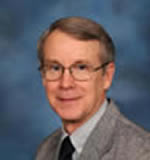
Sutton Stephens, P.E., S.E., Ph.D. has experience in the structural engineering field and in education. He has worked for consulting engineering firms in Washington and Montana and taught structural engineering courses at Kansas State University in the Architectural Engineering Department. In addition to the design of cold-formed steel structures, he has authored or co-authored a number of research papers covering various topics in cold-formed steel. He has served in the AISI Committee on Framing Standards (COFS) and chaired the Prescriptive Methods sub-committee. He also served on the CFSEI Executive Committee for two terms.
In order to receive credit for this course, you must complete the quiz at the end and pass with at least 80% for a certificate to be generated automatically

